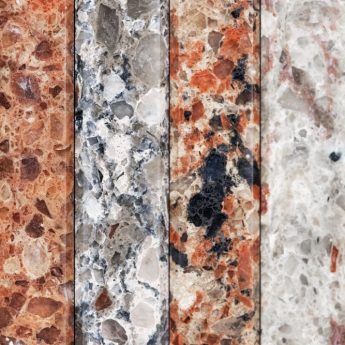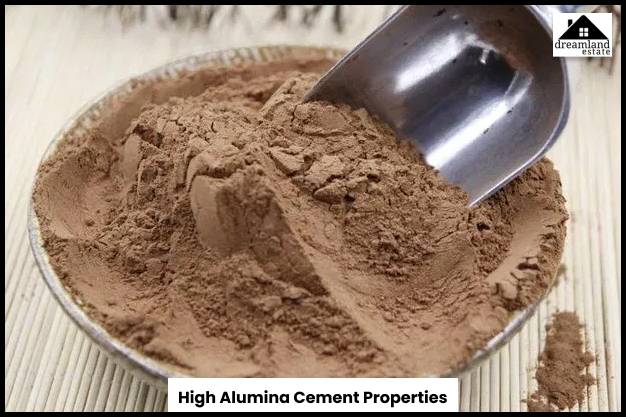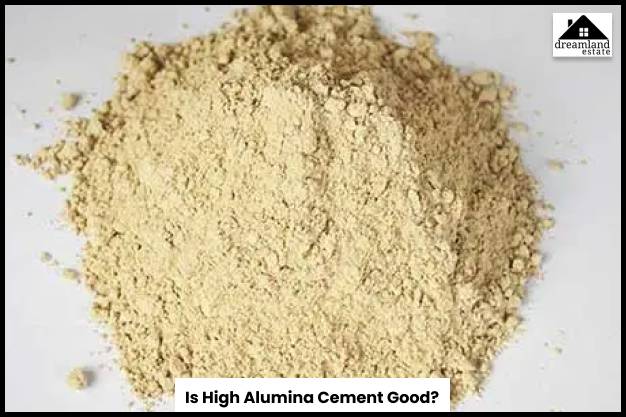What Is High Alumina Cement? Is It Good To Use?

Are you currently associated with the construction business? Are you planning on monitoring what cement your workers are using for building your dream house? There could be several reasons as to why you are, but in the next five minutes, you will be dedicated to finding out what is high alumina cement and what its uses are. Keep scrolling to find out now.
What Is High Alumina Cement:
What Lafarge did was revolutionary, especially in the world of cement and tedious constructions. He started manufacturing high alumina cement by mixing grounded alumina clinkers with calcareous materials like Lime. Lafarge did not just randomly combine these materials. Instead, he used a sintering process for fusing both materials.
As compared to ordinary portland cement, alumina cement has elements like lime and bauxite, which makes the cement highly resistant to any sort of chemical attack. Also known as calcium aluminum cement, this cement variety is often used for precast concreting as well as marine constructions.
Ingredients:
High alumina cement is easy to produce and can gain strength rapidly. Soon after its discovery, the cement gained popularity quickly, as a result. It contains the following ingredients.
- Silica – 3 to 8%
- Alumina – 37 to 41%
- Lime – 36 to 40%
- Iron Oxide – 9 to 10%
- Titanium – 1.5 to 2%
- Magnesium – 1%
- Insoluble Resides – 1%
Properties:
While going through the high alumina cement pdf, we came across all the properties of this cement variety. Thus, the properties of this type of cement are as follows,
- Calcium Aluminium cement has high resistant properties when it comes to chemical attacks.
- Moreover, Calcium Aluminium cement has a low level of pH, while the refractive index of the same is pretty high.
- High Alumina cement hardens very quickly with properties of high durability in the case of sulphuric acid.
- When this cement variety is added to refractory castables, a ceramic bond is formed at a high temperature.
- Moreover, it resists chemical corrosion since it’s used for constructions purposes in building water pipes, factory chimneys, drains, and coastal structures.
Uses:
The uses of high alumina cement are the primary reason behind its popularity since its discovery in 1952. Thus, the uses of this cement variety are as follows,
- It is popularly used in conducting marine constructions as well as for the construction of sewer infrastructure. This is because the cement has rapid hardening properties as well as it gains strength quickly.
- This cement variety is also commonly used in construction work involving refractory concretes. This is because, in such situations of high temperatures, more strength is needed.
Is High Alumina Cement Good To Use?
Are you wondering whether high alumina cement is good enough for use? My solution to this dilemma would be to understand the advantages and disadvantages of this cement variety before actually making any decision. Thus, scroll down and go through the advantages and disadvantages of this cement.
Advantages Of High Alumina Cement:
The advantages of this type of cement are as follows,
- Since this cement variety has a high setting time compared to other varieties, it takes more time for both mixing and placing.
- Another great advantage of chemical aluminum cement is that it can withstand conditions of high temperature. In this context, another benefit is the cement also has a high resistance to fire.
- Since it has a compressive strength that is very high, it is extremely reactive with heavy resistance to chemical actions.
- Since the evolved heat is heavy during the setting of the cement, the frost action is pretty low.
Disadvantages Of High Alumina Cement:
The disadvantages of this type of cement are as follows,
- Since the required amount of heat for manufacturing chemical aluminum cement is relatively more, the production cost of this cement variety is pretty high.
- Since the amount of heat evolving during the setting time of chemical aluminum cement is pretty high, this variety cannot be simply utilized for any work related to mass concreting.
- The fineness of alumina cement is kept at 2250 cm square/gram or a little more than that. The fineness is so much that it’s best not to be brought in contact with the human eye or mouth!
Other Variants Of Cement
High Alumina Cement is great and has varied usages. However, they are not the only kind of cement that is available in the market. This section is a testament to that statement. In this small bonus section, we will learn more about different kinds of cement.
Again, it is not a ranking list by any means. It is more of an informative list. So that you have a clear idea of the different forms of cement that are in the market.
Let’s go!
Ordinary Portland Cement (OPC)
Ordinary Portland Cement or OPCs are the most common cement variants that are used. This is the most used form of cement in the world. It is mainly used to build concrete structures. Therefore, it is also the most popular cement variant.
Portland pozzolana cement (PPC)
PPCs are made by adding pozzolana clinkers to a mix of PPC. This is mainly done in order to make the cement more resistant to chemical reactions that go inside the cement. Therefore making it more durable.
Rapid-hardening cement
Rapid-hardening cement is exactly what it sounds like. It has the ability to harden around half the total time it might take for OPC or PPC mixtures. Rapid-hardening cement is made using lime, which makes it harden rapidly.
Extra-rapid-hardening cement
As the name suggests, this form of cement hardens the fastest. This is usually used for projects with certain time constraints. This form of cement contains a higher level of calcium chloride compared to other variants.
Quick-setting cement
Quick-setting cement is exactly like the aforementioned ERHC. However, unlike the former, this cement variant not only sets fast but also shares the strength of OPC and PPC variants. Therefore, it is gradually becoming more and more popular.
Low-heat cement
Low-heat cement is made using tricalcium aluminate. Therefore, it helps regulate the heat released during the hydration process. This added element also makes the cement resistant to sulphates and either form of weathering.
Sulfate-resisting cement
Sulfate-resisting cement tries to help reduce the side effects of sulfate on concrete. This kind of cement fixes one of the major problems of cement ios sulfate damage. Therefore making it the best cement for laying the foundation
Blast furnace slag cement
Blast furnace slag cement is one-of-a-kind cement that is used by grinding up clinker with around 60% slag. Therefore, cement has a lower production cost than most other variants of cement. Which is why it is often used for financially conscious projects.
White cement
White cement is just an OPC variant that is white hue. This variant of cement is generally used for fastening floor tiles and other forms of tiles. This is usually made using raw materials but does not contain iron oxides. Therefore, it is usually considered to be more expensive.
Colored cement
Colored cement is one of the recent inventions and has some similarities with the OPC mix. Colored cement usually demonstrates a similar kind of compression strength to OPCs but comes in a pigmented format. Due to its appearance, coloured cement is usually used in specific projects.
Frequently Asked Questions (FAQs):
1. What Are The Advantages Of High Alumina Cement?
It can withstand very high-temperature conditions. In places where the weather is cold, the action of the frost is reduced due to more amount of heat evolution during the setting period.
2. What Is The Problem With High Alumina Cement?
Construction structures made from chemical aluminum cement do undergo several changes within their crystalline structures. In the construction world, this event marks transformation or conversion, and it happens to cause a loss in strength, which either warmth or moisture has generated.
3. Why Is High Alumina Cement Content Banned?
Although the chemical aluminum cement has several benefits, many countries have banned using this cement for construction purposes after several high-profile failures.
Wrapping Up:
When Lafarge discovered high alumina cement in 1952, the benefits of the cement stumped most industry experts. Then, for the first time, building material was found that could not just resist high temperatures but also withstand fire. In the 1950s, this characteristic appealed to the masses because people were just finding out that you can protect your house from fire and similar issues via building materials with the properties of ordinary restaurants.
Although this cement was the result of a complete man-made chemical reaction, people were still pretty shocked. Even after a few high-level failures, this cement has been banned in several countries, yet it continues to be used in places where it has not been banned. Thus, if you live in one of those countries, it’s time you check this cement out and use it for your next big construction project.
Read Also:
- What Is Low Heat Cement? Is It Good To Use?
- What Is Blast Furnace Slag Cement? Is It Good To Use?
- What Is Portland Pozzolana Cement? Is It Good To Use?














Leave A Reply